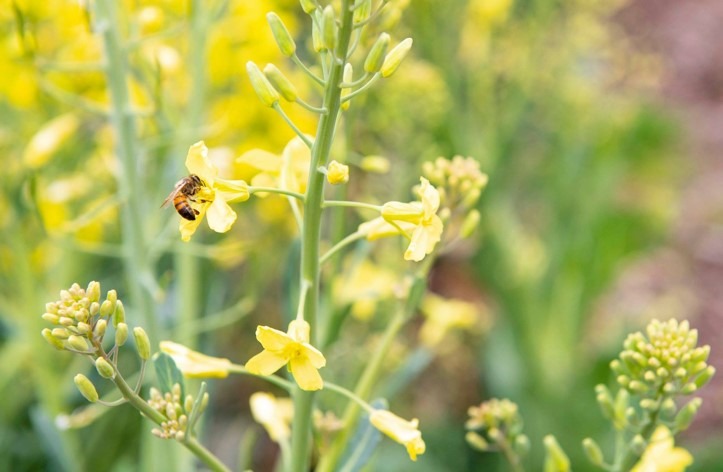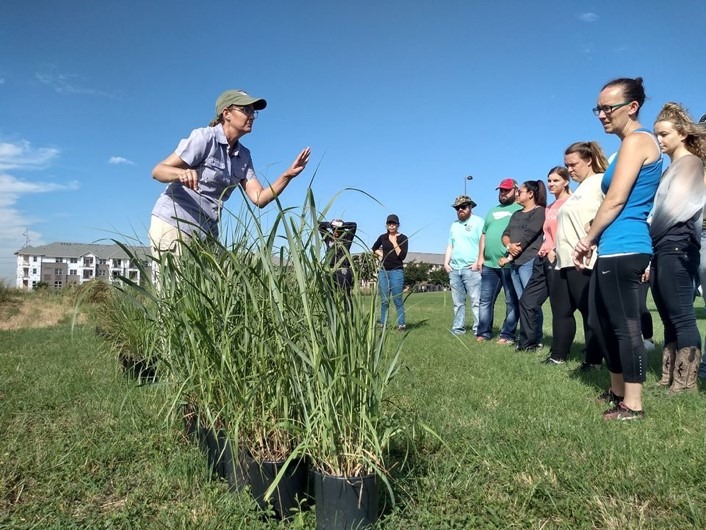This following is part of the “Where Are They Now?”series featuring guest posts from former interns, volunteers, staff, and friends of BRIT. This month’s post is from former BRIT intern, Delany Baum. Delany interned with the Texas Plant Conservation Program in Summer and Fall 2019.
In 2016, staff and students within the ecology department at the University of North Texas in Denton stared at a four-acre plot surrounding the engineering campus at Discovery Park and saw nothing but Bermuda grass. With an extensive background in urban conservation and restoration ecology, Dr. Jaime Baxter-Slye wanted to transform this empty field into a pollinator sanctuary of native North Central Texas plants. In May of that year, Baxter-Slye received funding from the We Mean Green Fund, a sustainability initiative that works to fund campus environmental improvement projects proposed by the UNT community, and began the first steps of restoring this prairie to its former glory. Baxter-Slye and her team named this project the “Pecan Creek Pollinative Prairie” to signify the use of native plants to support pollinator species.

Denton lies within the Blackland Prairie ecoregion of Texas which once supported a large area of tallgrass prairie and thousands of plant and animal species. Unfortunately, due to its fertile soils it has largely been plowed and used for agriculture and cattle grazing, leaving little of its original habitat. Because the university is in an increasingly more urbanized region of Texas, Baxter-Slye set some goals before beginning construction on the Pollinative Prairie. Her primary objectives were to remove the invasive Bermuda grass, establish a plant community of Texas native prairie plants from the Blackland Prairie ecosystem, and educate the public on the importance of promoting native plant and animal species and their habitat.

Within the first two years of its establishment, over 300 undergraduate students at UNT volunteered roughly 900 hours to transform an empty lawn into a vibrant landscape of flowers, native grasses, and several different pollinator species. Today, the prairie is home to over 200 plant and animal species that were documented by volunteers, including a family of American Kestrels!

The Pollinative Prairie has formed several partnerships to enhance their public education efforts including Monarch Waystation, SEEDS (Strategies for Ecological Education, Diversity, and Sustainability), Bee Campus USA, and the Xerces Society. Each of these organizations have specific requirements for a project to be considered for a partnership, so the Pollinative Prairie is quite active in maintaining their status in several different organizations.

Each semester, dozens of classes from the environmental science and ecology departments make a trip to the Pollinative Prairie to volunteer in plantings and documenting species. By participating they are able to receive hands-on learning experience about the importance of preserving native habitats and the vital role pollinators play in our ecosystems. The Pollinative Prairie continues to receive funding from the We Mean Green Fund and hopes to expand its reach both in size and to the public.
Due to COVID-19, all volunteer events have been suspended but you can sign up to join the volunteer mailing list to receive updates about upcoming opportunities by going the Pecan Creek Pollinative Prairie’s homepage here!




